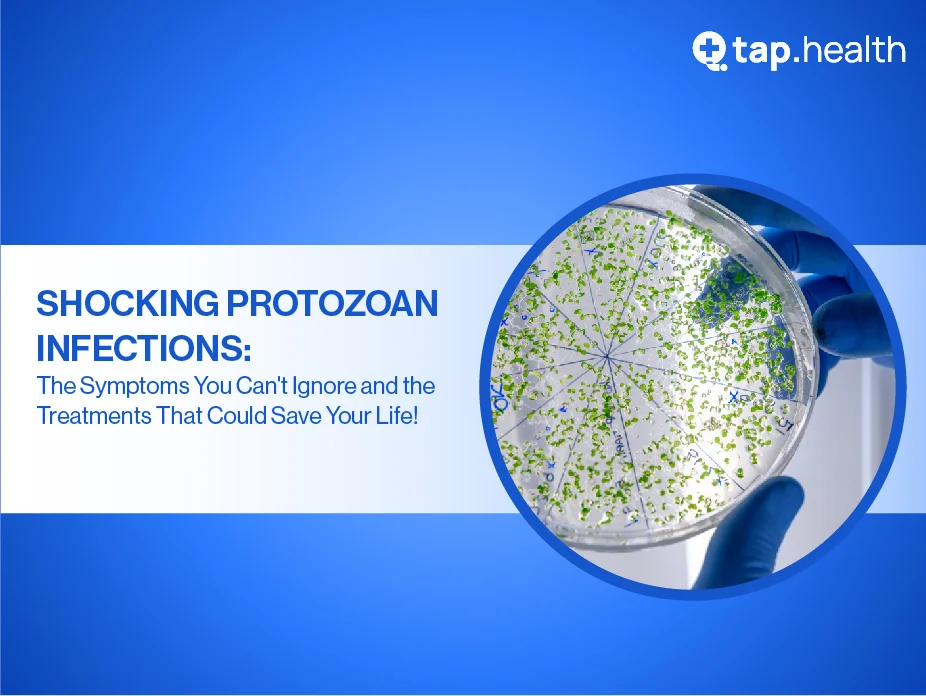Protozoan infections, caused by single-celled parasites, pose significant health challenges worldwide, particularly in regions with poor sanitation and limited healthcare access. From malaria to giardiasis, these infections can affect various body systems, leading to diverse symptoms and complications. This article explores how to recognize protozoan infections, their symptoms, treatment options, and preventive measures to reduce their global impact.
What Are Protozoan Infections?
Protozoan infections are caused by microscopic, single-celled organisms that invade human tissues or organs. These parasites are often transmitted through contaminated food or water, insect bites, or direct contact. They thrive in environments like freshwater, soil, or animal digestive tracts, making them a public health concern, especially in tropical and subtropical regions.
Key Points:
- Protozoa can target the gastrointestinal tract, blood, liver, or brain.
- Common transmission methods include mosquito bites (e.g., malaria) or contaminated water (e.g., giardiasis).
- Symptoms vary based on the parasite and the host’s immune response.
What Are the Common Types of Protozoan Infections?
Several protozoan infections affect humans, each with distinct symptoms and transmission methods. Below are some of the most prevalent:
1. Malaria: A Global Health Threat
What is it?
Malaria, caused by Plasmodium parasites, is transmitted via Anopheles mosquito bites. It primarily affects tropical regions, with sub-Saharan Africa bearing the highest burden.
Symptoms:
- High fever
- Chills
- Headaches
- Fatigue
- Severe cases may lead to organ failure or death.
Treatment: Antimalarial drugs like chloroquine or artemisinin-based therapies are used, though drug-resistant strains complicate treatment.
Prevention:
- Use insecticide-treated bed nets.
- Take antimalarial prophylaxis in endemic areas.
- Control mosquito populations through environmental management.
2. Giardiasis: A Waterborne Infection
What is it?
Giardiasis, caused by Giardia intestinalis, spreads through contaminated water or food, often in areas with poor sanitation.
Symptoms:
- Diarrhea
- Abdominal cramps
- Bloating
- Chronic cases may cause malabsorption and weight loss.
Treatment: Medications like metronidazole or tinidazole are effective.
Prevention:
- Ensure safe drinking water.
- Practice proper hygiene and food safety.
3. Trypanosomiasis (Sleeping Sickness)
What is it?
Caused by Trypanosoma brucei, this disease is transmitted by tsetse flies in sub-Saharan Africa.
Symptoms:
- Early: Fever, headaches, joint pain.
- Late: Sleep disturbances, confusion, neurological issues.
Treatment: Antiparasitic drugs like pentamidine or suramin are used, depending on the disease stage.
Prevention:
- Implement tsetse fly control programs.
- Conduct active surveillance in endemic areas.
4. Amoebiasis: Gastrointestinal Impact
What is it?
Amoebiasis, caused by Entamoeba histolytica, spreads through contaminated food or water, particularly in tropical regions.
Symptoms:
- Abdominal pain
- Diarrhea (sometimes bloody)
- Severe cases may lead to liver abscesses.
Treatment: Metronidazole or tinidazole, followed by a luminal agent to eliminate cysts.
Prevention:
- Improve sanitation and water quality.
- Practice good hygiene.
5. Toxoplasmosis: A Silent Risk
What is it?
Toxoplasmosis, caused by Toxoplasma gondii, is contracted through undercooked meat, contaminated soil, or cat feces.
Symptoms:
- Often asymptomatic in healthy individuals.
- Severe cases in immunocompromised individuals or pregnant women can lead to complications.
Treatment: Pyrimethamine and sulfadiazine are used for severe cases.
Prevention:
- Cook meat thoroughly.
- Avoid contact with cat feces.
- Practice good hygiene.
6. Leishmaniasis: Diverse Manifestations
What is it?
Caused by Leishmania parasites, this disease is transmitted by sandfly bites and is common in tropical and subtropical areas.
Symptoms:
- Cutaneous: Skin sores.
- Visceral: Affects organs like the spleen and liver, potentially fatal.
Treatment: Amphotericin B or miltefosine, depending on the type.
Prevention:
- Use insect repellents and bed nets.
- Control sandfly populations.
7. Cryptosporidiosis: Waterborne Threat
What is it?
Caused by Cryptosporidium, this infection spreads through contaminated water or food.
Symptoms:
- Watery diarrhea
- Stomach cramps
- Dehydration
Treatment: Nitazoxanide is used, but supportive care (e.g., hydration) is critical for immunocompromised patients.
Prevention:
- Use filtered or boiled water.
- Improve sanitation practices.
8. Chagas Disease: A Silent Killer
What is it?
Caused by Trypanosoma cruzi, this disease is transmitted by triatomine bugs, also known as “kissing bugs.”
Symptoms:
- Early: Often asymptomatic or mild.
- Late: Cardiac or gastrointestinal complications.
Treatment: Benznidazole or nifurtimox for early stages; no cure for chronic cases.
Prevention:
- Improve housing to reduce bug habitats.
- Screen blood donations.
9. Trichomoniasis: Sexually Transmitted
What is it?
Caused by Trichomonas vaginalis, this is a common sexually transmitted infection.
Symptoms:
- Vaginal discharge
- Itching
- Discomfort during intercourse
- Many cases are asymptomatic.
Treatment: Metronidazole or tinidazole.
Prevention:
- Practice safe sex.
- Regular STI screenings.
How Are Protozoan Infections Diagnosed?
Diagnosis depends on the infection and may include:
- Microscopy: Examining blood, stool, or tissue samples for parasites.
- Serological Tests: Detecting antibodies or antigens in the blood.
- PCR Testing: Identifying parasite DNA for accurate diagnosis.
- Imaging: Used for complications like liver abscesses in amoebiasis.
Early diagnosis is critical to prevent severe complications, especially for diseases like malaria and trypanosomiasis.
How Can Protozoan Infections Be Treated?
Treatment varies by parasite and disease severity:
- Antiparasitic Drugs: Common treatments include metronidazole, artemisinin, and benznidazole.
- Supportive Care: Hydration and symptom management for infections like cryptosporidiosis.
- Challenges: Drug-resistant strains, particularly in malaria, complicate treatment, necessitating ongoing research for new therapies.
How Can You Prevent Protozoan Infections?
Preventing protozoan infections involves a combination of personal and public health measures:
- Hygiene: Wash hands regularly and ensure food safety.
- Safe Water: Drink filtered or boiled water in endemic areas.
- Vector Control: Use bed nets, insect repellents, and environmental management to reduce mosquito, tsetse fly, or sandfly populations.
- Education: Community awareness programs promote preventive practices.
- Sanitation: Improve water and sanitation infrastructure to reduce waterborne infections like giardiasis and cryptosporidiosis.
- Safe Sex: Use condoms to prevent trichomoniasis.
What Is the Global Impact of Protozoan Diseases?
Protozoan infections disproportionately affect resource-limited regions, contributing to:
- High Morbidity and Mortality: Millions are affected annually, with malaria alone causing over 600,000 deaths yearly (WHO data, 2023).
- Economic Burden: Healthcare costs and lost productivity hinder development.
- Social Disparities: Poor sanitation and limited healthcare access exacerbate the problem in vulnerable communities.
Global efforts, including research, vector control, and affordable treatments, are essential to reducing this burden.
Why Is Research Important for Protozoan Infections?
Ongoing research is critical for:
- Drug Development: Addressing drug-resistant strains, especially in malaria.
- Vaccines: Developing vaccines for diseases like leishmaniasis.
- Diagnostics: Improving rapid, accessible diagnostic tools.
- Vector Control: Innovating methods to reduce insect populations.
Collaboration between governments, NGOs, and researchers is vital for advancing these efforts.
Conclusion
Protozoan infections, from malaria to trichomoniasis, remain a global health challenge, particularly in regions with limited resources. Recognizing symptoms, seeking timely diagnosis, and implementing preventive measures like safe water practices and vector control can significantly reduce their impact. Continued research and global collaboration are essential to developing effective treatments and ultimately eradicating these diseases, improving health equity worldwide.



